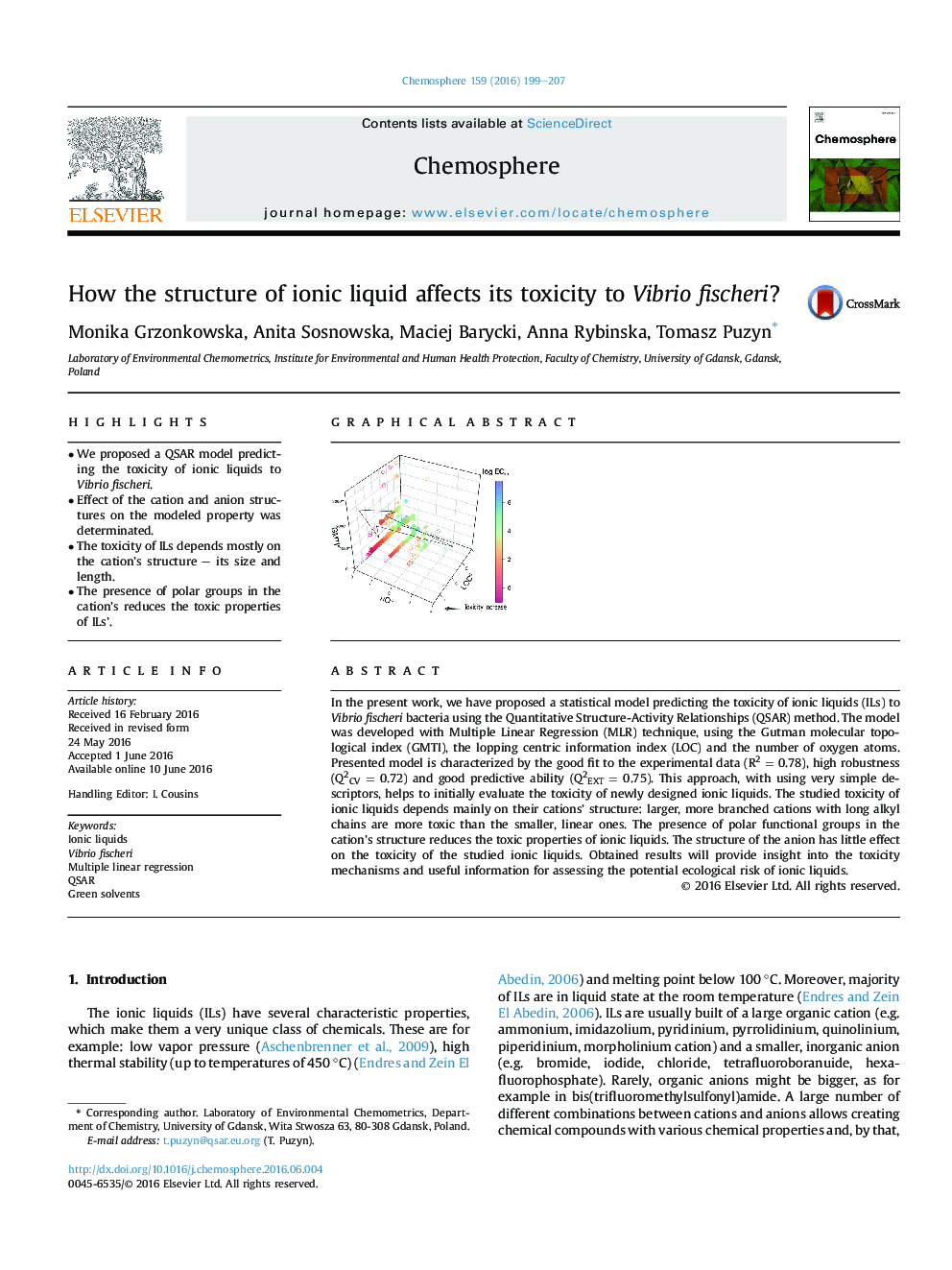| Article ID | Journal | Published Year | Pages | File Type |
|---|---|---|---|---|
| 4407415 | Chemosphere | 2016 | 9 Pages |
•We proposed a QSAR model predicting the toxicity of ionic liquids to Vibrio fischeri.•Effect of the cation and anion structures on the modeled property was determinated.•The toxicity of ILs depends mostly on the cation’s structure – its size and length.•The presence of polar groups in the cation’s reduces the toxic properties of ILs’.
In the present work, we have proposed a statistical model predicting the toxicity of ionic liquids (ILs) to Vibrio fischeri bacteria using the Quantitative Structure-Activity Relationships (QSAR) method. The model was developed with Multiple Linear Regression (MLR) technique, using the Gutman molecular topological index (GMTI), the lopping centric information index (LOC) and the number of oxygen atoms. Presented model is characterized by the good fit to the experimental data (R2 = 0.78), high robustness (Q2CV = 0.72) and good predictive ability (Q2EXT = 0.75). This approach, with using very simple descriptors, helps to initially evaluate the toxicity of newly designed ionic liquids. The studied toxicity of ionic liquids depends mainly on their cations’ structure: larger, more branched cations with long alkyl chains are more toxic than the smaller, linear ones. The presence of polar functional groups in the cation’s structure reduces the toxic properties of ionic liquids. The structure of the anion has little effect on the toxicity of the studied ionic liquids. Obtained results will provide insight into the toxicity mechanisms and useful information for assessing the potential ecological risk of ionic liquids.
Graphical abstractFigure optionsDownload full-size imageDownload as PowerPoint slide
